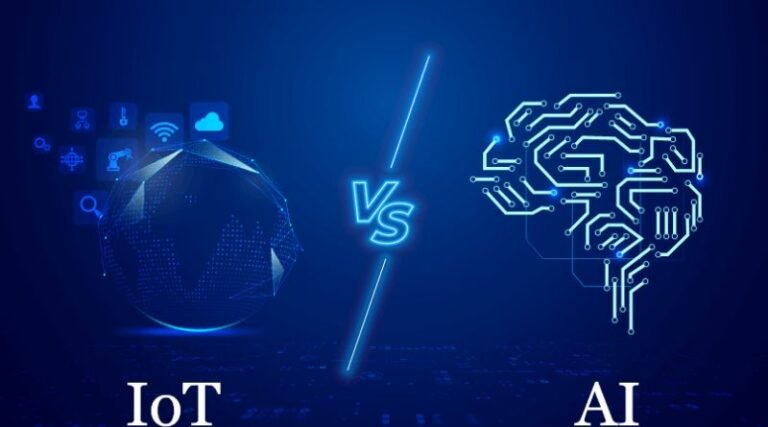The Convergence of AI and IoT: Creating Smarter Systems
In today’s rapidly evolving digital landscape, two technologies are making a significant impact: Artificial Intelligence (AI) and the Internet of Things (IoT). Each of these on their own has transformative potential. However, when combined, they become a powerful force, driving innovation and reshaping industries. This convergence of AI and IoT is giving birth to smarter, more intuitive systems that are poised to revolutionize the way we live, work, and interact with the world around us.
Understanding IoT and AI
To appreciate the synergy between AI and IoT, it’s essential to understand each technology individually. IoT refers to the network of physical objects—devices, vehicles, appliances, and more—that are connected to the internet and can collect, share, and analyze data. These devices range from smart thermostats to industrial sensors, all designed to improve efficiency and convenience through real-time data exchange.
AI, on the other hand, is the ability of machines to mimic human intelligence. This includes learning from data, making decisions, and solving problems with minimal human intervention. AI technologies such as machine learning, natural language processing, and computer vision allow systems to interpret data and make informed choices based on patterns.
The Intersection of AI and IoT
The intersection of AI and IoT happens when AI algorithms are applied to the massive amounts of data generated by IoT devices. While IoT provides connectivity and data, AI enables systems to interpret and act upon this data intelligently. This convergence leads to the creation of smarter systems capable of real-time decision-making, predictive analysis, and automation.
For instance, a smart home equipped with IoT devices such as thermostats, lighting systems, and security cameras can become truly “smart” when AI algorithms learn a user’s preferences and habits. AI can predict when to adjust the temperature, when to turn on or off lights, and even detect unusual activity through security cameras. Over time, the system becomes more personalized and efficient, providing a seamless user experience.
Benefits of AI and IoT Convergence
The convergence of AI and IoT brings several advantages that are reshaping industries and enhancing everyday life. Here are some key benefits:
- Enhanced Efficiency: In industrial settings, AI can analyze data from IoT sensors to optimize production processes. For example, predictive maintenance can detect when a machine is likely to fail, allowing companies to address issues before they result in costly downtime.
- Improved Decision-Making: AI’s ability to process and analyze large datasets in real-time enables faster, more accurate decision-making. This is particularly valuable in industries like healthcare, where IoT-enabled devices can monitor patients, and AI can assist in diagnosing illnesses or suggesting treatment plans.
- Personalization: AI can enhance user experiences by learning preferences and behaviors. Whether it’s a smart home system or a retail application, the combination of IoT and AI allows for highly personalized services, catering to individual needs and improving satisfaction.
- Automation at Scale: AI-driven IoT systems can automate tasks that previously required human oversight. From smart factories to autonomous vehicles, these systems are streamlining operations and reducing the need for manual intervention, leading to cost savings and higher productivity.
- Predictive Analytics: By combining AI with IoT data, organizations can move beyond reactive responses and make proactive decisions. For example, in supply chain management, AI can predict demand fluctuations, optimize inventory levels, and reduce waste, improving the overall efficiency of operations.
Real-World Applications of AI and IoT
The convergence of AI and IoT is already making an impact across a variety of sectors. Here are some real-world applications:
- Smart Cities: AI-powered IoT devices are being deployed to monitor traffic, reduce energy consumption, and improve public safety. These technologies create more sustainable, efficient urban environments that adapt to residents’ needs in real-time.
- Healthcare: IoT devices such as wearable health monitors collect vital patient data, while AI systems analyze this information to identify potential health risks, suggest treatments, and even provide early diagnosis. This is helping doctors deliver better, more personalized care.
- Agriculture: Smart farming solutions use IoT sensors to monitor soil conditions, weather patterns, and crop health. AI processes this data to optimize irrigation, fertilization, and pest control, increasing yields and reducing resource usage.
- Manufacturing: In factories, AI-driven IoT systems monitor machinery performance and detect potential issues before they cause breakdowns. This reduces maintenance costs and increases operational efficiency.
Challenges of AI and IoT Integration
While the convergence of AI and IoT is driving innovation, it also comes with challenges. One major hurdle is data privacy and security. With so much data being collected and analyzed, ensuring that sensitive information remains protected is critical. There is also the challenge of integrating AI into existing IoT systems, which may require significant investment in infrastructure and expertise.
Additionally, as AI learns from IoT data, biases in the data can lead to unintended outcomes. It’s essential to ensure that AI systems are trained on diverse and unbiased datasets to avoid reinforcing inequalities or making flawed decisions.
Conclusion
The convergence of AI and IoT is ushering in a new era of smarter systems that promise to enhance efficiency, personalization, and automation across industries. By working together, these technologies are creating solutions that were once the realm of science fiction, from smart cities to predictive healthcare. While challenges remain, the potential for innovation is immense, and the fusion of AI and IoT is undoubtedly paving the way for a smarter, more connected world.

